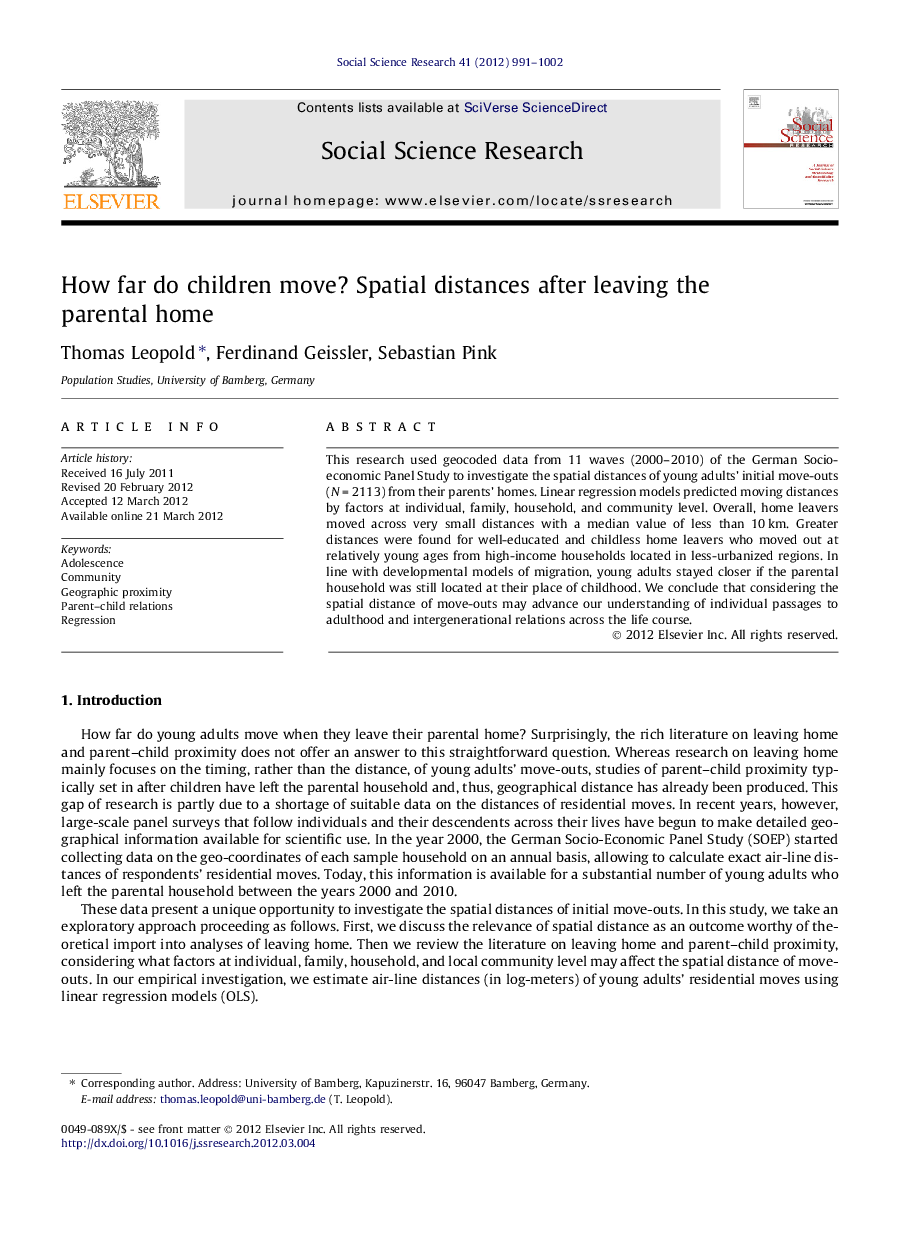| Article ID | Journal | Published Year | Pages | File Type |
|---|---|---|---|---|
| 955888 | Social Science Research | 2012 | 12 Pages |
This research used geocoded data from 11 waves (2000–2010) of the German Socio-economic Panel Study to investigate the spatial distances of young adults’ initial move-outs (N = 2113) from their parents’ homes. Linear regression models predicted moving distances by factors at individual, family, household, and community level. Overall, home leavers moved across very small distances with a median value of less than 10 km. Greater distances were found for well-educated and childless home leavers who moved out at relatively young ages from high-income households located in less-urbanized regions. In line with developmental models of migration, young adults stayed closer if the parental household was still located at their place of childhood. We conclude that considering the spatial distance of move-outs may advance our understanding of individual passages to adulthood and intergenerational relations across the life course.
► We analyze spatial distances of initial move-outs from the parental home. ► Most home leavers move across less than 10 km. ► Our multivariate models predict distance by individual, family, and community factors. ► We discuss implications for individual passages to adulthood and family relations.
